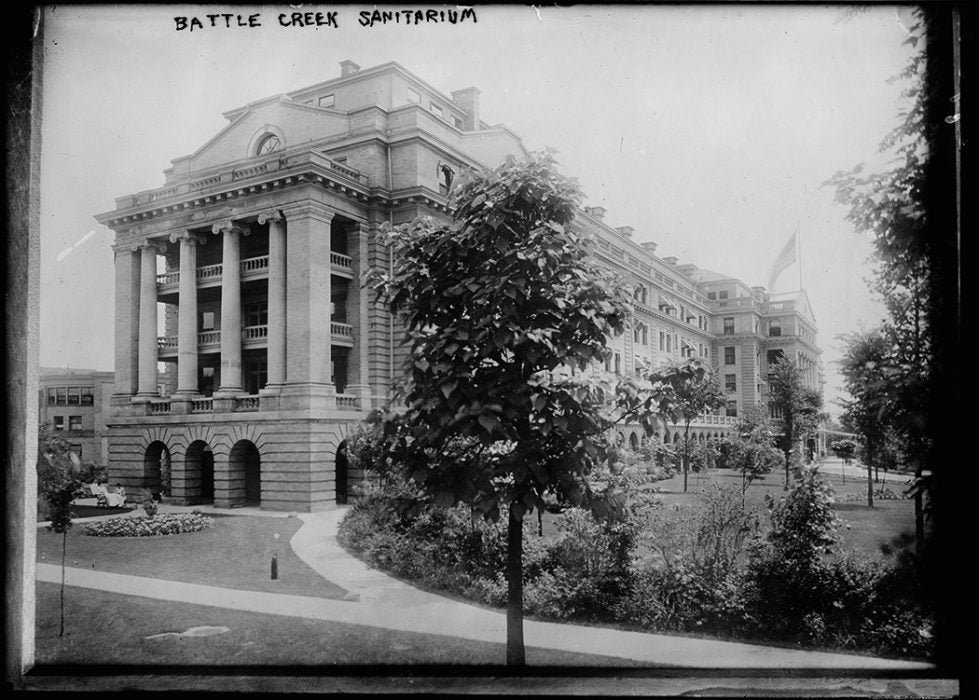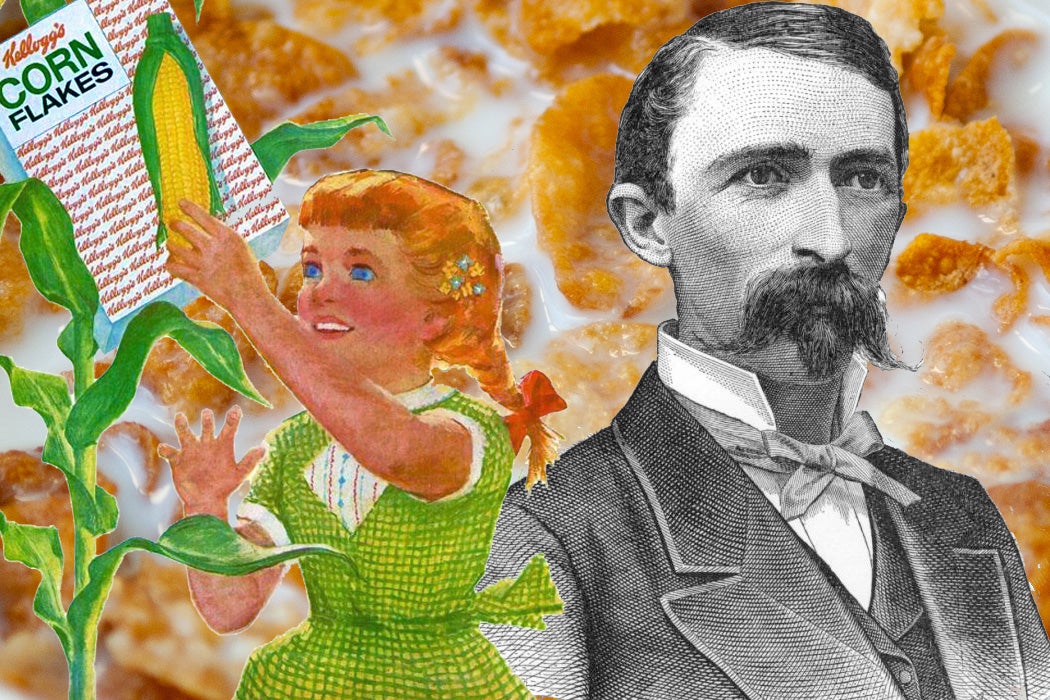John Harvey Kellogg, the father of the prepared breakfast food industry, was born on February 26th, 1852. He lived for ninety-one years, perhaps thanks to the fresh air and vegetarian diet he advocated for as clean “biological living.” A physician, nutritionist, inventor, and medical missionary, Kellogg was part of the great wave of social reformers of the Progressive Era. He was also a bit of a nut when it came to that great bugbear of moral reform, sex.
A Seventh-day Adventist until he was thrown out of the church in 1907 over differences in theology, Kellogg was a firm believer in the Social Gospel. This was a Protestant movement that tackled social problems with Christian ethics. As historian Richard W. Schwarz writes, Kellogg took his beliefs to Chicago’s slums, where he opened a branch of his famed Battle Creek Sanitarium.

Directed by the Police Chief to find the “dirtiest and wickedest place” in the city, Kellogg opened his Chicago mission in 1893. It “offered a free medical dispensary, free baths, free laundry, an evening school for Chinese, and a visiting nurse’s service.” Kellogg’s Sanitarium Health Food Company provided special foods as well. Additionally, a penny lunch service was instituted: a bowl of bean soup with zwieback crackers, offered for a penny, went to an average of 500-600 people a day.
Like Sylvester Graham, whose name also lives on in food form (i.e., graham crackers), Kellogg believed in foods that would not excite the passions. This meant vegetarianism. It also meant combatting what was considered the debilitating scourge of masturbation. As scholar Vern L. Bullough writes, Kellogg was an inheritor of the eighteenth century tradition which held that masturbation led to a host of ailments and then insanity.
Once a Week
Bullough takes a deep breath to condense Kellogg’s take on the ills of onanism. These included:
general disability, consumption-like symptoms, premature and defective development, sudden changes in disposition, lassitude, sleeplessness, failure of mental capacity, fickleness, untrustworthiness, love of solitude, bashfulness, unnatural boldness, mock piety, being easily frightened, confusion of ideas, aversion to girls in boys but a decided liking of boys in girls, round shoulders, weak back and stiffness of joints, paralysis of the lower extremities, unnatural gait, bad posture in bed, lack of breast development in females, capricious appetite, fondness for unnatural or hurtful or irritation articles (such as salt, pepper, spices, vinegar, mustard, clay, slate pencils, plaster, and chalk), disgust at simple food, use of tobacco, unnatural paleness, acne or pimples, biting of fingernails, shifty eyes, moist cold hands, palpitation of the heart, hysteria in females, chlorosis or green sickness (anemia), epileptic fits, bed-wetting, and use of obscene words and phrases.
Bullough shows that physical mutilation, bizarre harnesses, and electrical devices were all used to try and put a stop to masturbation. (By the 1930s, medical science began to move away from this curious theory.)
John Harvey Kellogg, meanwhile, opted for a less invasive remedy than, for example, the “special hobbles” designed to prevent girls from spreading their legs. Kellogg prescribed “biological living” and a bland diet including his special creation, corn flakes. His younger brother, W. K. Kellogg, was the one to mass produce, copyright, and market the doctor’s corn flake product (leaving out the original claim that it would curtail masturbation), creating the Kellogg’s brand we know today.







